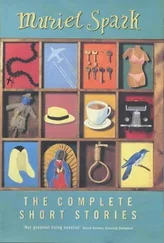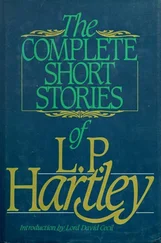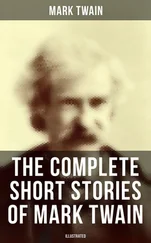Ah, easy now. Kick again. Good. Wonder if my legs are blue.
Kick.
Something yielding.
Kick …
By the time T was ten years old, his machine was already on the fringes of that galaxy. T was not his name – the laboratory never considered christening him – but it was the symbol on the hull of his machine and it will suffice for a name. And again, it was not his machine; rather, he belonged to it. He could not claim the honourable role of pilot, nor even the humbler one of passenger; he was a chattel whose seconds of utility lay two hundred years ahead.
He lay like a maggot in the heart of an apple at the centre of the machine, as it fled through space and time. He never moved; the impulse to move did not present itself to him, nor would he have been able to obey if it had. For one thing, T had been created legless – his single limb was an arm. For another, the machine hemmed him in on all sides. It nourished him by means of pipes which fed into his body a thin stream of vitamins and proteins. It circulated his blood by a tiny motor that throbbed in the starboard bulkhead like a heart. It removed his waste products by a steady siphoning process. It produced his supply of oxygen. It regulated T so that he neither grew nor wasted. It saw that he would be alive in two hundred years.
T had one reciprocal duty. His ears were filled perpetually with an even droning note and before his lidless eyes there was a screen on which a dull red band travelled forever down a fixed green line. The drone represented (although not to T) a direction through space, while the red band indicated (although not to T) a direction in time. Occasionally, perhaps only once a decade, the drone changed pitch or the band faltered from its green line. These variations registered in T’s consciousness as acute discomforts, and accordingly he would adjust one of the two small wheels by his hand, until conditions returned to normal and the even tenor of monotony was resumed.
Although T was aware of his own life, loneliness was one of the innumerable concepts that his creators arranged he should never sense. He lay passive, in an artificial contentment. His time was divided not by night or day, or waking or sleeping, or by feeding periods, but by silence or speaking. Part of the machine spoke to him at intervals, short monologues on duty and reward, instructions as to the working of a simple apparatus that would be required two centuries ahead. The speaker presented T with a carefully distorted picture of his environs. It made no reference to the inter-galactic night outside, nor to the fast backward seepage of time. The idea of motion was not a factor to trouble an entombed thing like T. But it did refer to the Koax in reverent terms, speaking also – but in words filled with loathing – of that inevitable enemy of the Koax, Man. The machine informed T that he would be responsible for the complete destruction of Man.
T was utterly alone, but the machine which carried him had company on its flight. Eleven other identical machines – each occupied by beings similar to T – bore through the continuum. This continuum was empty and lightless and stood in the same relationship to the universe as a fold in a silk dress stands to the dress: when the sides of the fold touch, a funnel is formed by the surface of the material inside the surface of the dress. Or you may liken it to the negativity of the square root of minus two, which has a positive value. It was a vacuum inside a vacuum. The machines were undetectable, piercing the dark like light itself and sinking through the hovering millennia like stones.
The twelve machines were built for an emergency by a nonhuman race so ancient that they had abandoned the construction of other machinery eons before. They had progressed beyond the need of material assistance – beyond the need of corporal bodies – beyond the need at least of planets with which to associate their tenuous egos. They had come finally, in their splendid maturity, to call themselves only by the name of their galaxy, Koax. In that safe island of several million stars they moved and had their being, and brooded over the coming end of the universe. But while they brooded, another race, in a galaxy far beyond the meaning of distance, grew to seniority. The new race, unlike the Koax, was extrovert and warlike; it tumbled out among the stars like an explosion, and its name was Man. There came a time when this race, spreading from one infinitesimal body, had multiplied and filled its own galaxy. For a while it paused, as if to catch its breath – the jump between stars is nothing to the gulf between the great star cities – and then the time/space equations were formulated; Man strode to the nearest galaxy armed with the greatest of all weapons, Stasis. The temporal mass/energy relationship that regulates the functioning of the universe, they found, might be upset in certain of the more sparsely starred galaxies by impeding their orbital revolution, causing, virtually, a fixation of the temporal factor – Stasis – whereby everything affected ceases to continue along the universal time-flow and ceases thereupon to exist. But Man had no need to use this devastating weapon, for as on its by-product, the Stasis drive, he swept from one galaxy to another, he found no rival, nor any ally. He seemed destined to be sole occupant of the universe. The innumerable planets revealed only that life was an accident. And then the Koax were reached.
The Koax were aware of Man before he knew of their existence, and their immaterial substance cringed to think that soon it would be torn through by the thundering drives of the Supreme Fleet. They acted quickly. Materializing onto a black dwarf, a group of their finest minds prepared to combat the invader with every power possible. They had some useful abilities, of which being able to alter and decide the course of suns was not the least. And so nova after nova flared into the middle of the Supreme Fleet. But Man came invincibly on, driving into the Koax like a cataclysm. From a small, frightened tribe a few hundred strong, roaming a hostile earth, he had swelled into an unquenchable multitude, ruling the stars. But as the Koax wiped out more and more ships, it was decided that their home must be eliminated by Stasis, and ponderous preparations were begun. The forces of Man gathered themselves for a massive final blow.
Unfortunately, a Fleet Library Ship was captured intact by the Koax, and from it something of the long, tangled history of Man was discovered. There was even a plan of the Solar System as it had been when Man first knew it. The Koax heard for the first time of Sol and its attendants. Sol at this time, far across the universe, was a faintly radiating smudge with a diameter twice the size of the planetary system that had long ago girdled it. One by one, as it had expanded into old age, the planets had been swallowed into its bulk; now even Pluto was gone to feed the dying fires. The Koax finally developed a plan that would rid them entirely of their foes. Since they were unable to cope in the present with the inexhaustible resources of Man, they evolved in their devious fashion a method of dealing with him in the far past, when he wasn’t even there. They built a dozen machines that would slip through time and space and annihilate Earth before Man appeared upon it; the missiles would strike, it was determined, during the Silurian Age and reduce the planet to its component atoms. So T was born.
‘We will have them,’ one of the greatest Koax announced in triumph when the matter was thrashed out. ‘Unless these ancient Earth records lie, and there is no reason why they should, Sol originally supported nine planets, before its degenerate stage set in. Working inwards, in the logical order, these were – I have the names here, thanks to Man’s sentimentality – Pluto, Neptune, Uranus, Saturn, Jupiter, Mars, Earth, Venus and Mercury. Earth, you see, is the seventh planet in, or the third that was drawn into Sol in its decline. That is our target, gentlemen, a speck remote in time and space. See that your calculations are accurate – that seventh planet must be destroyed.’
Читать дальше












